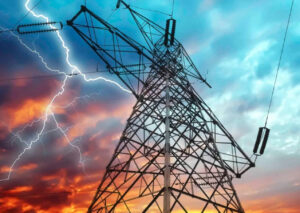
Tractor imports to Ukraine in January–April 2025 amounted to $294.2 million, which is 2.6% less than in the same period of 2024, according to statistics from the State Customs Service (SCS).
According to published statistics, tractors were mainly imported from the United States (21.3% of total imports of this equipment, or $62.5 million), Germany (16.8% or $52.2 million), and China (16% or $47.3 million), while a year earlier it was Germany ($49.34 million), the Netherlands ($38.6 million), and Poland ($37 million).
In April of this year, tractor imports decreased by 2.1% compared to April 2024, to $85.1 million, while in March, the increase was 13.3% compared to March 2024, amounting to $98.62 million.
According to statistics, only $1.63 million worth of tractors were exported in the first four months of this year, mainly to Romania, Zambia, and Germany.
As reported, tractor imports to Ukraine in 2024 amounted to almost $784 million, 5.6% less than a year earlier, while exports amounted to $5.44 million compared to $5.74 million.

In January-April 2025, truck imports to Ukraine decreased by 4.3% in monetary terms compared to the same period in 2024, to $286.56 million, according to statistics from the State Customs Service (SCS).
According to the published data of the SCS, in April, imports of this type of vehicle decreased by 12.2% compared to April 2024, to $71.31 million.
The largest number of trucks in four months was imported from the US – $64.09 million (22.4% of imports), Poland – $61.77 million (21.2%), and France – $46.03 million (16%).
A year ago, the top three truck suppliers were Poland (23.2% of total truck imports, or $69 million), the US (11%, or $33.4 million), and China (10.1%, or $30.2 million).
Imports from all other countries in January-April decreased by 30.6% to $115.7 million.
At the same time, according to statistics, Ukraine exported only $2.73 million worth of trucks in four months, mainly to Romania (57.3% of exports of such vehicles), Turkey, and Moldova, while a year earlier, exports were even more insignificant ($1 million).
As reported, in 2024, imports of trucks to Ukraine in monetary terms increased by 30% compared to 2023, to $947.84 million, with the largest share coming from Poland (almost 20%).

The possibilities for increasing exports of Ukrainian mineral fertilizers and controlling their imports, in particular preventing the import of fertilizers from the aggressor country through other countries, were discussed by the Minister of Agrarian Policy and Food of Ukraine, Vitaliy Koval, at a working meeting with representatives of domestic mineral fertilizer producers at the ministry, according to a press release on the ministry’s website.
“This meeting was supposed to answer the question of how to increase exports of Ukrainian fertilizers to Africa, Asia, and further to the EU. Representatives of Ostchem (the largest producer of nitrogen fertilizers) and the Union of Chemists of Ukraine were unanimous at this meeting: imports remain the key problem,” said Oleg Arestarkhov, director of corporate communications at Group DF, to the Interfax-Ukraine news agency.
According to him, it is imports that prevent Ukrainian companies from expanding production and increasing exports, primarily imports from countries of the former Soviet Union, which have a single market with Russia: Kazakhstan, Uzbekistan, Turkmenistan, and Azerbaijan, which account for almost half (300,000 tons) of all nitrogen fertilizer imports.
“They have access to cheap gas, so they can dump prices. Total imports of nitrogen fertilizers in the first four months of 2025 amounted to 1.2 million tons, of which 689,300 tons were nitrogen fertilizers. For comparison, Ukrainian production for the four months will be about 500,000 tons,” Arestarkhov said.
He added that Ukraine is losing the urea market, and a new trend is that China has begun to actively supply low-quality cheap ammonium sulfate.
According to the Ostchem representative, due to growing imports, Ukrainian enterprises are operating at the break-even point, which is holding back capital investment in industrial sites and forcing them to lay off workers.
An additional problem for Ukrainian producers is Russian shelling, after which Ostchem had to shut down its workshops several times in the first quarter due to damage to the external gas and energy infrastructure.
“It is logical that we are waiting for support from the government. We spoke openly about this at the meeting and provided them with all the statistics. The dominance of imports is one of the reasons for the decline in the industry. This is also the reason why Dniproazot and the state-owned Odesa Port Plant cannot start production. If the government lends a helping hand, it will see an increase in exports,” Oleksiy Golubov, president of the Ukrainian Chemists’ Union, told the Interfax-Ukraine news agency.
In turn, Minister Koval emphasized the instructions of Ukrainian President Volodymyr Zelenskyy to expand the geography of exports, in particular to the Middle East and Africa, as well as to open a mineral fertilizer hub in South Africa and develop trade between the two countries.
“Ukraine has all the prerequisites for mineral fertilizers to become not only a means of strengthening food security within the country, but also a strategic export commodity,” said the head of the Ministry of Agrarian Policy.
According to the press release, representatives of investment companies, including umgi, also participated in the meeting.

In April 2025, Ukraine doubled its electricity exports compared to March, reaching 151.6 thousand MWh, while imports fell by almost a third to 187 thousand MWh, according to the Ukrainian energy and climate think tank DiXi Group, citing Energy Map.
As explained by DiXi Group experts on the center’s Facebook page, at the beginning of the month, electricity consumption increased due to lower air temperatures, in particular due to additional heating needs. However, in the second half of April, stable weather conditions – warmer and sunny weather – reduced the load on the power grid and contributed to an increase in exports.
Of the 151.6 thousand MWh, 38% (57.1 thousand MWh) went to Hungary, 35% (52.8 thousand MWh) to Moldova, 15% (23.3 thousand MWh) to Romania, 12% (18.4 thousand MWh) to Slovakia. Supplies to Poland have been suspended since mid-March.
Compared to April 2024, exports increased 12.6 times: at that time, they amounted to only 12 thousand MWh.
The distribution of 187,000 MWh of electricity imports by country is as follows: 45% (83,100 MWh) came from Hungary, 18% (34,200 MWh) from Slovakia, 18% (34.2 thousand MWh) from Poland, 13% (24.5 thousand MWh) from Romania, and 6% (11 thousand MWh) from Moldova.
Compared to April 2024 (223.8 thousand MWh), imports decreased by 16%.
“Despite the growth in exports, the total volume of imports in April still exceeds exports by 19%,” DiXi Group experts note.
As reported, Ukraine increased electricity exports by 131% in March to 76.3 thousand MWh, while imports increased by 11% to 272.3 thousand MWh.

Ukraine has already exported 494,000 tons of sugar in the 2024-2025 marketing year, of which 196,600 tons were exported in January-April 2025, according to the press service of the National Association of Sugar Producers of Ukraine “Ukrtsukor” on Facebook.
According to the report, 90% was destined for the global market, with 10% exported to EU countries.
According to the industry association, Turkey remains the leading buyer of Ukrainian sugar, accounting for 16% of export volumes, followed by Libya (11%) and EU countries (10%).

The National Bank of Ukraine (NBU) forecasts that gas imports will rise to $2.9 billion in 2025 due to Russia’s destruction of gas infrastructure, which will be partially financed by international partners.
“In the forecast period, production will gradually recover, but it will be insufficient to fully cover the domestic needs of the economy, including industry, housing and communal services, and households,” the National Bank said in its Inflation Report for April 2025.
The regulator expects gas procurement needs to gradually decline in 2026 to about $1.1 billion and fall to $0.4 billion in 2027.
“The continuing electricity deficit and losses in the gas production industry will hamper GDP recovery over the forecast horizon and increase the dependence of the energy and industrial sectors of the economy on imports, which will generate corresponding price risks that may be passed on to consumer prices,” the NBU added.
It is noted that significant risks of further destruction of energy infrastructure remain, and their realization could further dampen GDP growth and increase inflationary pressures. At the same time, the possibility of a faster recovery of the electricity or gas infrastructure or the introduction of new capacities remains a positive factor for the forecast.
As reported, during three years of full-scale invasion, Russia has carried out more than 30 massive complex attacks on Ukrainian energy infrastructure facilities, causing billions of dollars in damage.
According to the former head of the Ukrainian Gas Transmission System Operator (OGTSU), Serhiy Makogon, given the volume of its own production, Ukraine will need to import 5.5-6.3 billion cubic meters of gas by the start of the heating season on November 1, 2025, which will require approximately $2.5-3 billion. According to his estimates, by the start of the next heating season, it is necessary to have at least 9 billion cubic meters of reserves (excluding buffer gas) in underground gas storage facilities, as this year’s experience has shown that starting the season with lower reserves is extremely risky, since by the end of the season reserves fell to approximately 0.68 billion cubic meters.
In turn, Dmitry Abramovich, a member of the board and commercial director of the Naftogaz group, said at the end of March that Ukraine needs to import 4.5-4.6 billion cubic meters of natural gas by November 1 this year.
Since the beginning of this year, Naftogaz has contracted 1.5 billion cubic meters of gas: 800 million cubic meters were urgently imported at the beginning of the year, 400 million cubic meters will arrive in the country in preparation for next winter, and another 300 million cubic meters of LNG were purchased by Naftogaz from Poland’s ORLEN. The company is also negotiating with the government and international financial institutions to attract EUR 1 billion in financing to purchase more than 2 billion cubic meters of gas.
According to Makogon, guaranteed gas import capacity is approximately 50 million cubic meters per day, so it will take three months to import 4.6 billion cubic meters of gas and four months to import 5.6-6.3 billion cubic meters, assuming 100% capacity utilization, which is commercially difficult to achieve.
Thus, he believes that in order to import the necessary volumes by November 1, it is necessary to start importing significant volumes of gas as early as May.